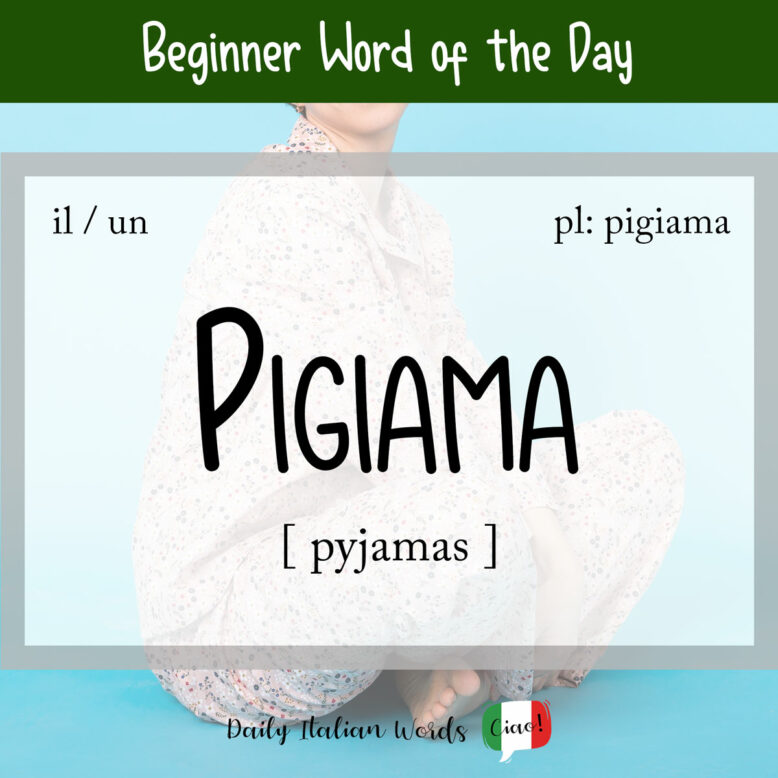The Italian word for the loose-fitting garments we wear to bed is pigiama. It entered the language via English, but can be traced back to the Urdu and Persian words pāy (leg) + jāma (clothing).

In English, we use the plural pyjamas to talk about a single pair of pyjamas, whereas Italian has a singular and plural form. The singular is used to denote a single pair of pyjamas, whereas the plural refers to two or more pairs. Here are the definite and indefinite articles:
il pigiama
the (single pair of) pyjamas
un pigiama
a (single pair of) pyjamas
i pigiami
the pyjamas
(more than one pair)*
dei pigiami
some pyjamas
(more than one pair)*
*Note: Pigiama is sometimes considered invariable, which means that its form does not change in the plural. This means that both i pigiami and i pigiama (the pyjamas) are correct.
Of course, if you want to be even more precise, you can say un paio di pigiama (a pair of pyjamas).
Vado un attimo in camera per mettermi il pigiama.
I’m going to my room for a few seconds to put on my pyjamas.

Along with pigiama itself, the term pigiama party has also entered the Italian language, referring, as it does in English, to a night-time party where pyjamas or nightgowns are worn.
Finally we have the pigiama-palazzo (palazzo pyjama), a suit made up of wide trousers and a slip blouse that was created in the 1960s by the Russian princess Irene Galitzine.
Heather Broster is a graduate with honours in linguistics from the University of Western Ontario. She is an aspiring polyglot, proficient in English and Italian, as well as Japanese, Welsh, and French to varying degrees of fluency. Originally from Toronto, Heather has resided in various countries, notably Italy for a period of six years. Her primary focus lies in the fields of language acquisition, education, and bilingual instruction.


